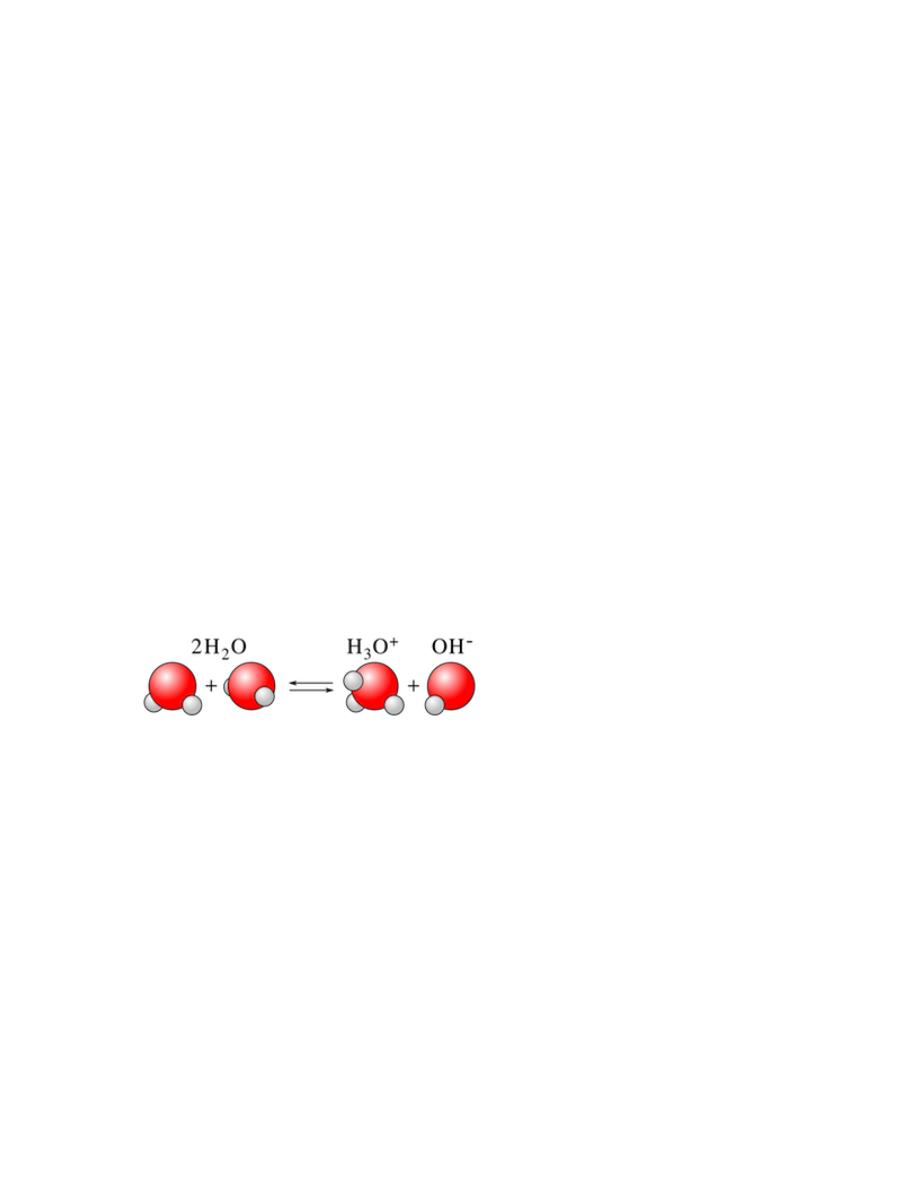
5
أ.م.د.طارق حسين مغير
-----------------
كلية الطب
-----------------
جامعة بابل
Water and life bestows:-
Water is a special molecule and has many unique properties that make it
essential for all life on Earth. In fact, when scientists look for life on other planets,
they first look for signs of water! Water is made of two hydrogen atoms bonded to
an oxygen atom. They form these bonds by sharing electrons.
However, oxygen is not very good at sharing. Oxygen is
extremely electronegative, meaning it likes electrons. So it pulls the electrons in
the bond closer to itself, causing oxygen to get a partial negative charge and the
hydrogen atoms to get partial positive charges. This allows water to form bonds
between different molecules based on the charges, called hydrogen bonds. This
gives water many of its unique properties that allow it to support life.
Water also has the important property of acting as both an acid or a base
depending on the conditions. Water goes through autoionization, where one
water molecule can donate a hydrogen atom to another. This forms hydroxide
ions (OH-) and hydronium ions (H3O+). In this example, water acts both as the
acid, donating hydrogen ions, and as the base, accepting hydrogen ions.
During autoionization, water acts as both an acid and a base
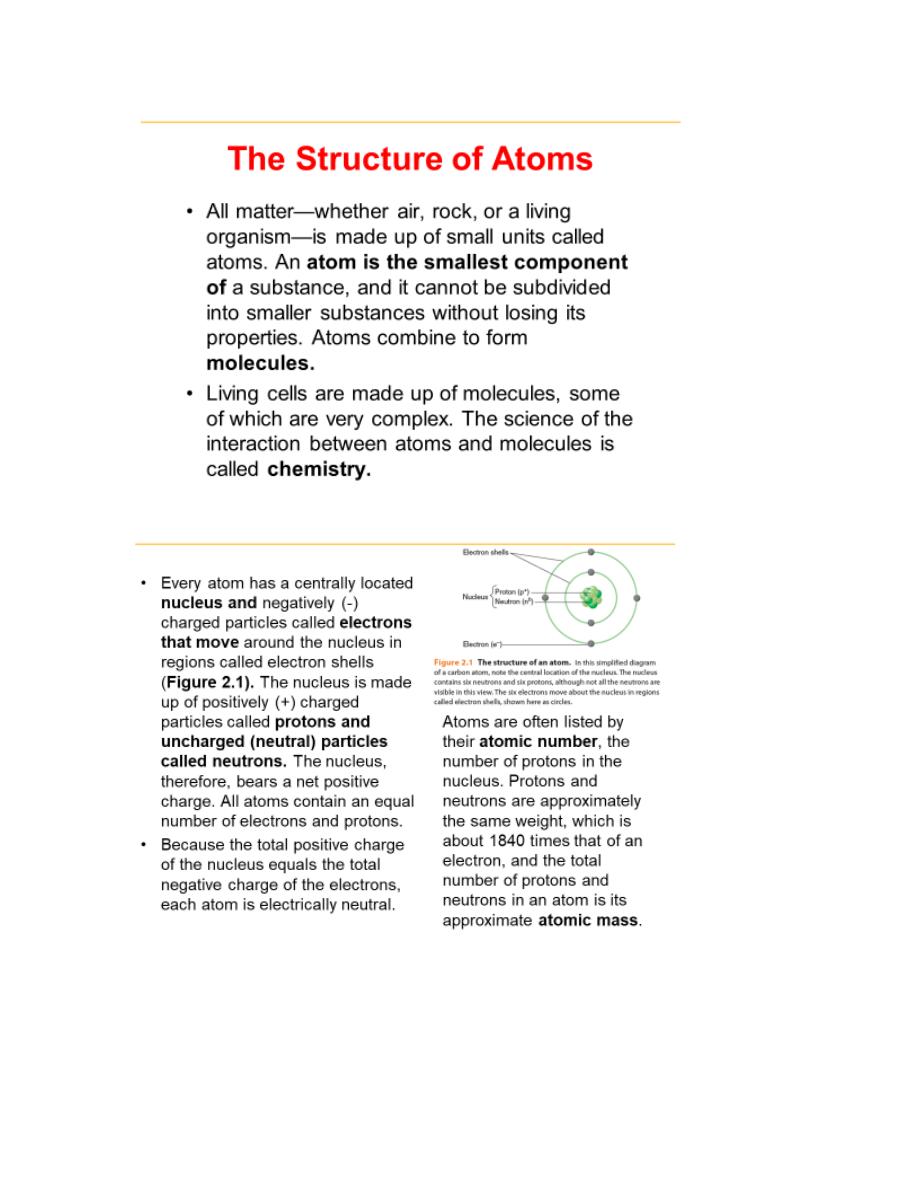
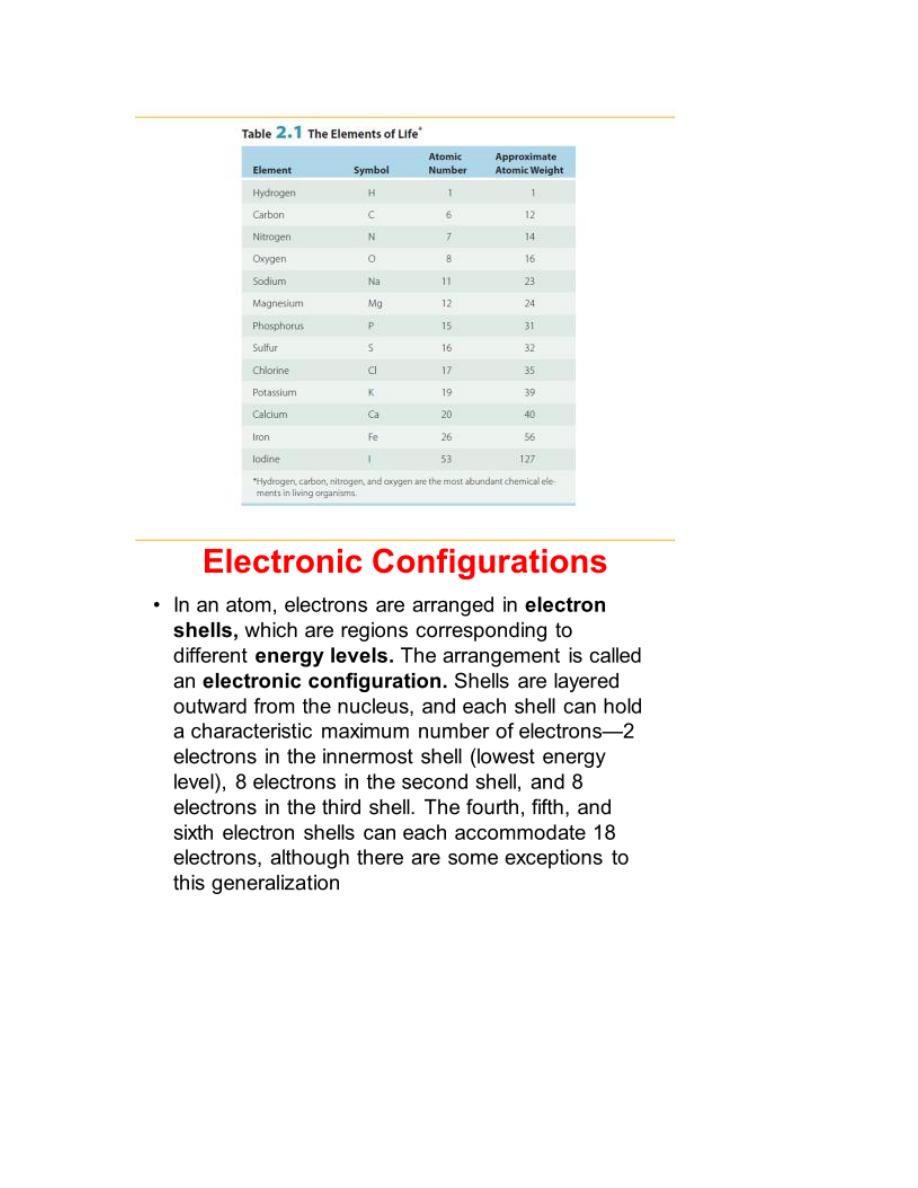
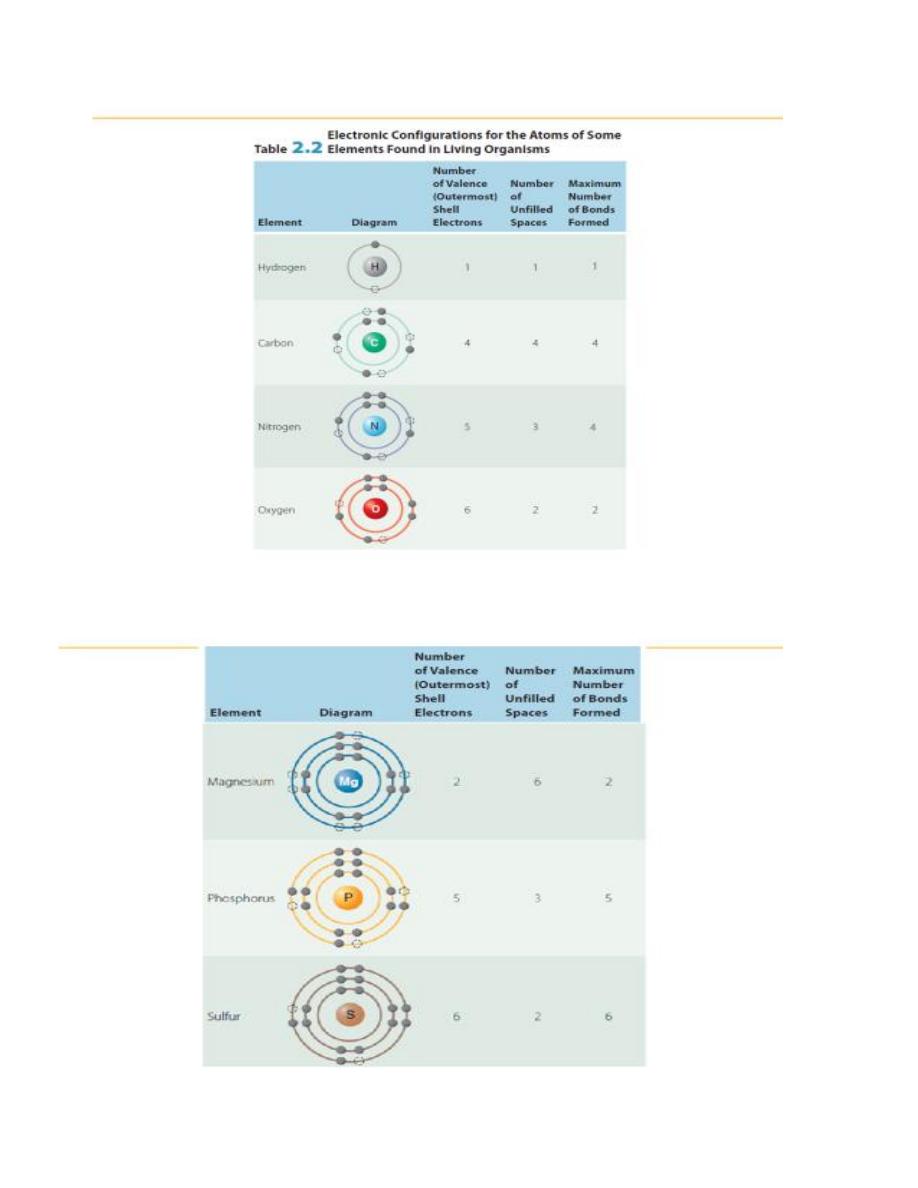
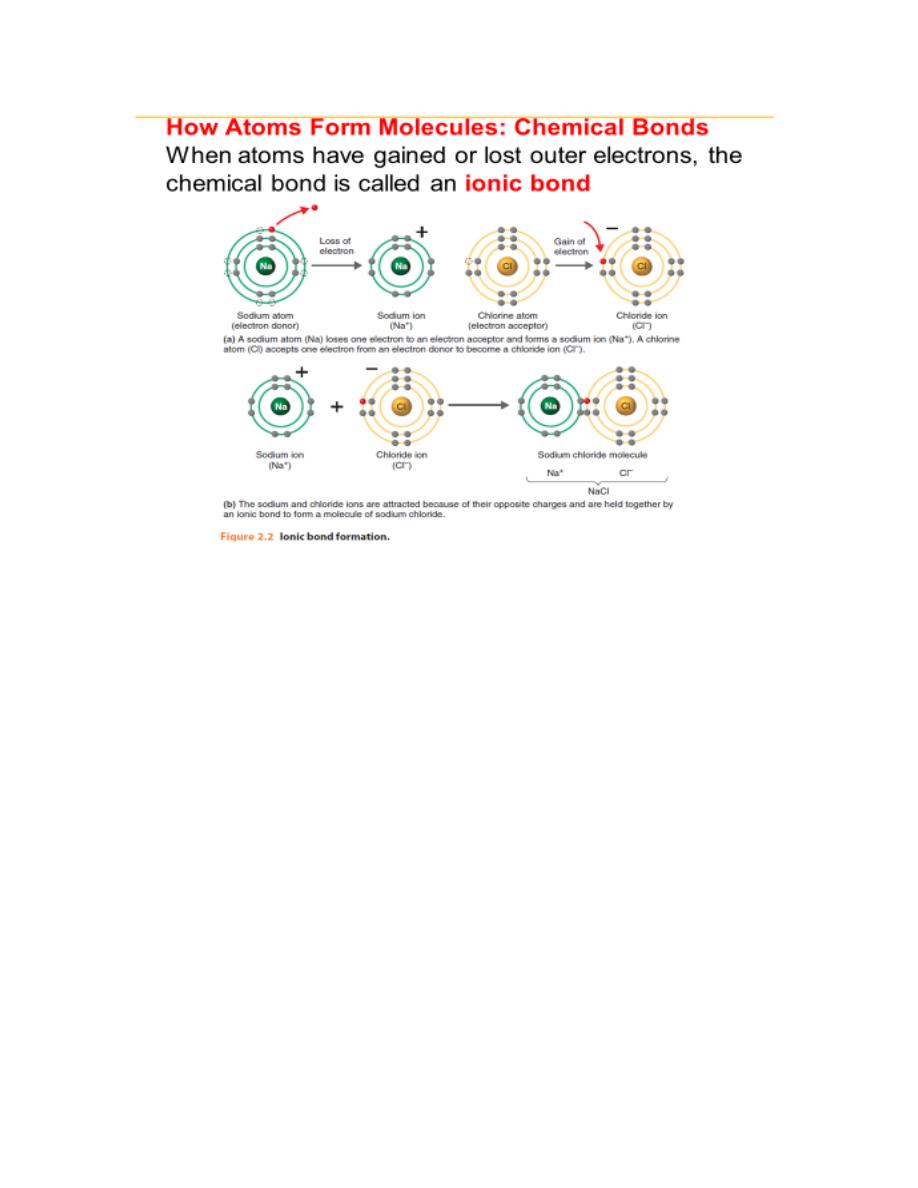
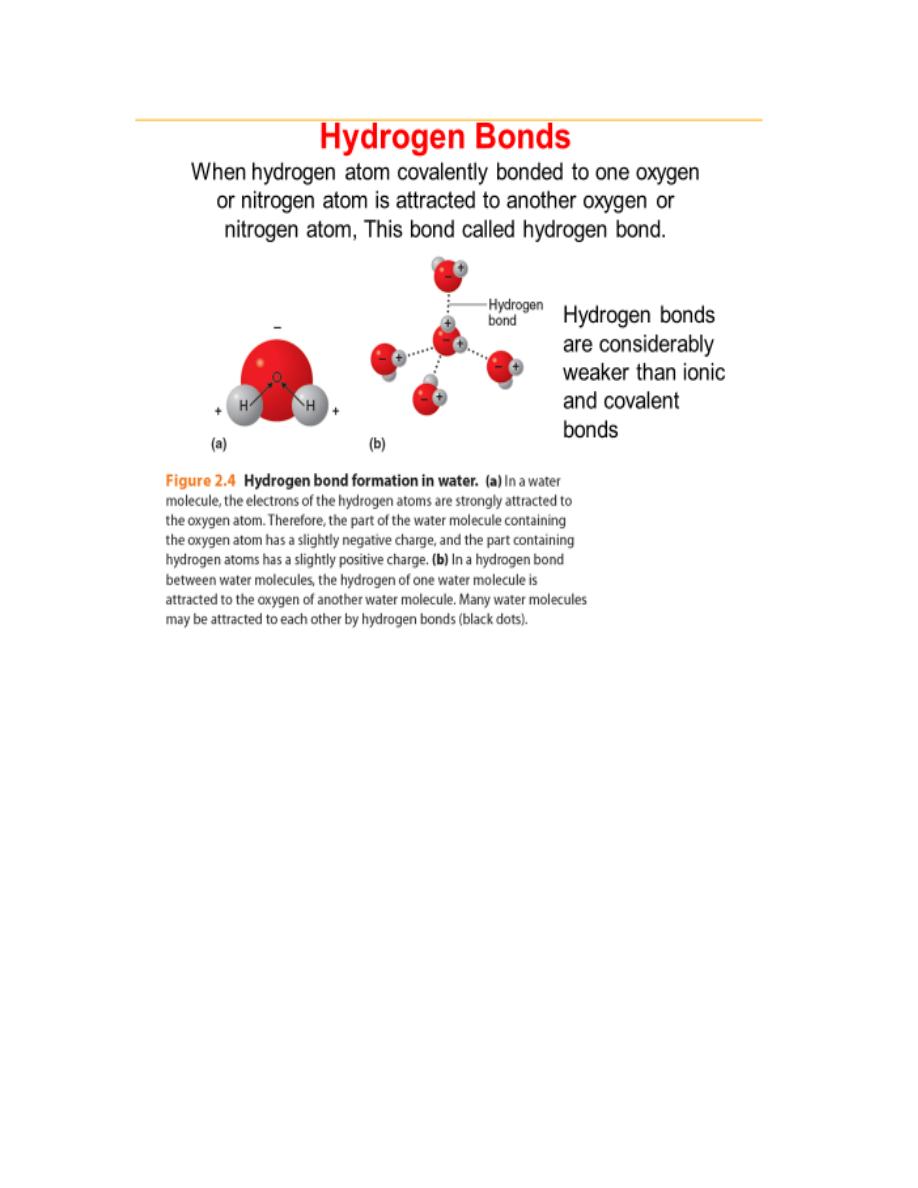

Water composition:-
The chemical composition of water is H
2
O—two hydrogen atoms and one
oxygen. The way those atoms bond together to form a water molecule is
what allows water’s special properties. The two H atoms form weak
hydrogen bonds with the oxygen; they attach to the top of the molecule
rather like Mickey Mouse ears.
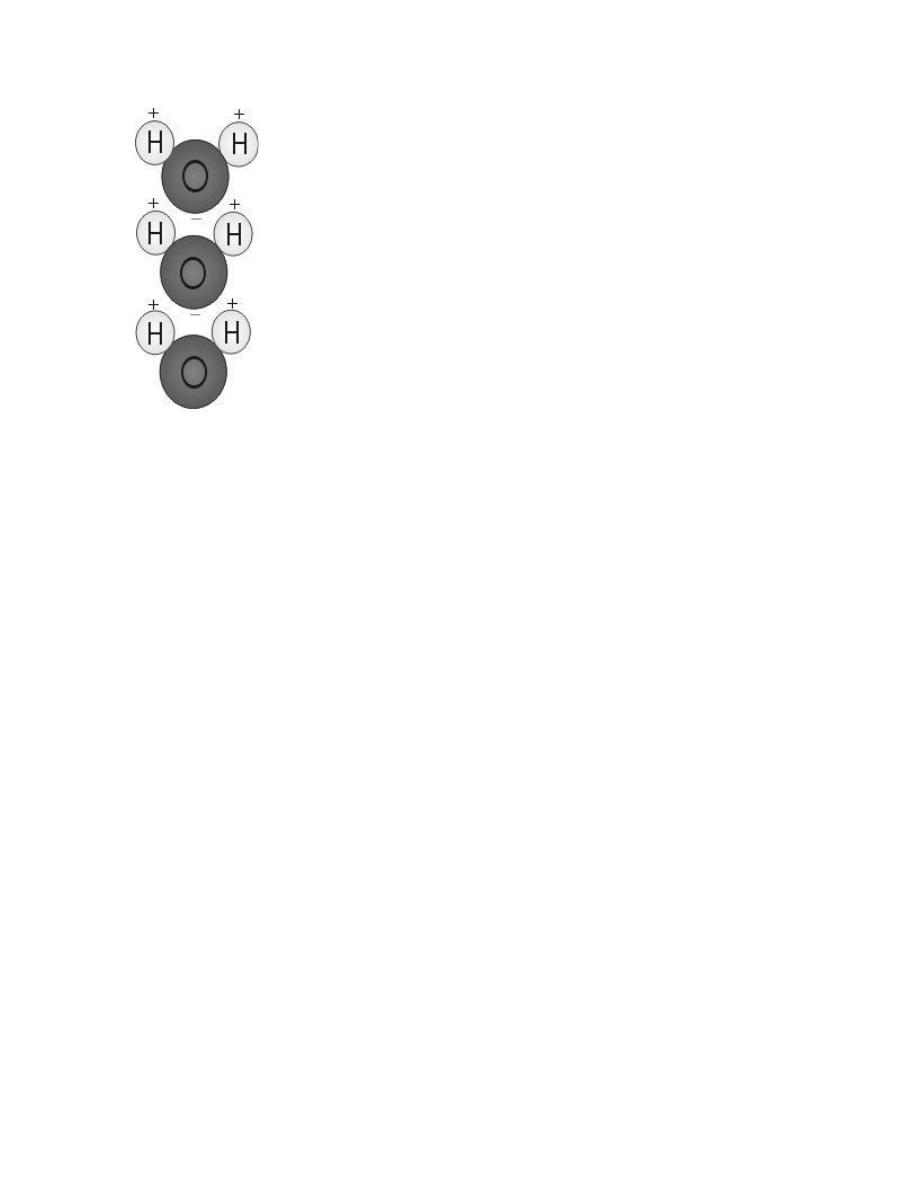
This molecular structure gives the water molecule polarity, or a lopsided
electrical charge that attracts other atoms. The end of the molecule with the
two H atoms is positively charged. The other end, with the oxygen, is
negatively charged. Just like in a magnet, where north poles are attracted
to south poles (opposites attract), the positive end of the water molecule
will connect with the negative end of other molecules.
Water is the only natural substance that can exist in all three states of
matter—solid, liquid, and gas—at the temperatures normally found on
Earth. Many other substances have to be super-heated or -cooled to
change states. The solid state of water (i.e., ice) is less dense than the
liquid state, which is why ice floats.
Polar substances dissolve easily in water, the ‘universal solvent’. That is
because one end of a polar molecule is more positively charged and one
end is more negatively charged. The positively charged end of a polar
molecule will be attracted to the negatively charged end of a water
molecule, and vice versa. Likewise, positive ions are attracted to the
negative end of the water molecule and vice versa. This molecular
attraction is what allows so many substances to dissolve easily in water—
the molecules are surrounded by water molecules. Oil and other non-
polar solutions do not have positively or negatively charged ends, so water
molecules will be attracted to each other rather than the oil. This is why oil
does not mix with water.
What Is the Function of Water in the Body?

Water serves multiple purposes:
•
Water is the primary building block of cells.
•
It acts as an insulator, regulating internal body temperature. This is partly
because water has a high specific heat, plus the body uses perspiration and
respiration to regulate temperature.
•
Water is needed to metabolize proteins and carbohydrates used as food. It
is the primary component of saliva, used to digest carbohydrates and aid
in swallowing food.
•
The compound lubricates joints.
•
Water insulates the brain, spinal cord, organs, and fetus. It acts as a shock
absorber.
•
Water is used to flush waste and toxins from the body via urine.
•
Water is the principal solvent in the body. It dissolves minerals, soluble
vitamins, and certain nutrients.
•
Water carries oxygen and nutrients to cells.
75%. The average
-
50
The amount of water in the human body ranges from
60%. The
-
er, averaging around 57
65% wat
-
adult human body is 50
78%
-
percentage of water in infants is much higher, typically around 75
water, dropping to 65% by one year of age.
Water as percentage of body weight in adults
Adults
Ages 12 to 18
Ages 19 to 50
Ages 51 and older
Male
average: 59
range: 52%–66%
average: 59%
range: 43%–73%
average: 56%
range: 47%–67%
Female
average: 56%
range: 49%–63%
average: 50%
range: 41%–60%
average: 47%
range: 39%–57%
Water as percentage of body weight in infants
and children

Birth to 6
months
6 months to 1
year
1 to 12 years
Infants and
children
average: 74%
range: 64%–84%
average: 60%
range: 57%–64%
average: 60%
range: 49%–
75%
How much water resides in your organs, tissue, and other body parts.
Body part
Water percentage
brain and heart
73%
Lungs
83%
Skin
64%
muscles and kidneys
79%
Bones
31%
How do you determine your
water percentage?
You can use the following equation to determine the percentage of
water in your body., for example, calculates total body water in liters for
men and women.
Watson formula for men
2.447
– (0.09145 x age) + (0.1074 x height in centimeters) + (0.3362 x
weight in kilograms) = total body water (TBW) in liters

Watson formula for women
–2.097 + (0.1069 x height in centimeters) + (0.2466 x weight in
kilograms) = total body water (TBW) in liters
Or using the following equation
(Weight
x
30 )/ 1000 = --- number of Liters
(Weight
x
30 )/ 250= --- number of cup
Loss of Water
The loss of water can be referred to Dehydration and it has a lot of
repercussions on the human body. For starters, the initial effects go to the brain
of an individual. There are various other levels of problems that come with this
that range from some basic and severe problems. You may feel dry mouth,
anxiety, sleepiness, the absence of tears as you cry, sunken eyes. Dehydration
affects all the organs of the body. Feeling weakness and digestion concerns are
also some of the most common problems in this case.
In the end, a fully hydrated body is perfect for keeping in check the good health.
Make sure that the necessary water levels of the body are appropriate and take
care of your health.
pH and Water
pH is a measure of how acidic/basic water is. The range goes from 0 to
less than 7 indicate acidity, whereas a
14, with 7 being neutral. pHs of
e pH of water is a very
pH of greater than 7 indicates a base. Th
important measurement concerning water quality.
Importance of pH
The pH of water determines the solubility (amount that can be
dissolved in the water) and biological availability (amount that can be
utilized by aquatic life) of chemical constituents such as nutrients

(phosphorus, nitrogen, and carbon) and heavy metals (lead, copper,
cadmium, etc.). For example, in addition to affecting how much and
what form of phosphorus is most abundant in the water, pH also
determines whether aquatic life can use it. In the case of heavy
metals, the degree to which they are soluble determines their toxicity.
Metals tend to be more toxic at lower pH because they are more
soluble.
Acid-base balance:-
Your blood needs the right balance of acidic and basic (alkaline) compounds to
function properly. This is called the acid-base balance. Your kidneys and lungs work to
maintain the acid-base balance..
Is blood an acid or base?
Blood is normally slightly basic, with a normal pH range of about 7.35 to 7.45.
Usually the body maintains the pH of blood close to 7.40. A doctor evaluates a
person's acid-base balance by measuring the pH and levels of carbon dioxide
(an acid) and bicarbonate (a base) in the blood.
What happens if pH is too high in body?
When your body fluids contain too much acid, it's known as acidosis. Acidosis
occurs when your kidneys and lungs can't keep your body's pH in balance.
Many of the body's processes produce acid. ... Acidosis can lead to numerous
health issues, and it can even be life-threatening.
Why is pH of blood important?
Blood carries the maximum oxygen at pH 7.4 (alkaline). Without proper
oxygenation, unfriendly bacteria, mold, and viruses will prosper. When the
human body is in an acidic state, it will try to shield itself from the damaging acid
by storing the acid in fat cells.
